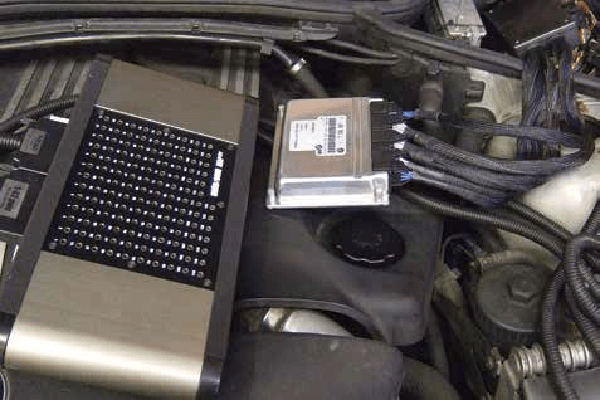The subject of engine management pin data sometimes appears to be surrounded in mystery.
Engine management pin data sometimes can frighten some workshop technicians enough for them to never use the data available to them to assist in their problem diagnosis. In truth it is far easier than most people think and if you have a breakout box and an oscilloscope it will make it even easier, but they are not essential. Just basic knowledge of electrical systems and a good modern multi-meter will be enough to carry out most of the checks you will need to perform. You will also require access to the data and a wiring diagram in Fig.1.

Although you may only need to test one specific component, in a modern vehicle it is often easier to access the terminals or wiring at the ECM to perform the tests. Engine components can sometimes be inaccessible without removing other components; this may take longer and result in a situation where the engine can’t be run to carry out the checks required.
SO WHY CHECK “ECM PIN DATA”?
Let us look at a typical problem.
A diesel powered vehicle is presented with a starting problem. The trouble codes have been accessed and code P1168 – fuel rail pressure (FRP) sensor – range/performance problem is recorded. The most likely probable causes are listed as follows: wiring, FRP sensor.
The technician may replace the FRP sensor without carrying out any further checks. In some cases he will have guessed correctly, but not always – an expensive mistake!

In our example the component wiring can be easily located using the wiring diagram and the multi-plug graphic Fig.1. A simple connection of the multi-meter probes and you are ready to carry out the checks.
Some simple checks could have pointed to the problem with more accuracy. A check of the component, if test data is available and a check for the correct signals that operate the component. Having access to both a wiring diagram and the ECM pin data is essential. Let’s look at the information for a typical model – see Fig.2.

If the output signal, earth connection and ignition ON input signal are correct, the sensor is probably serviceable. If not a continuity check of the wiring is needed before any further diagnosis is done.
If the input signal is correct when the engine is accelerated then the problem may be elsewhere.
If the input signal voltage doesn’t rise with engine speed then other components, including a check for mechanical faults, should be carried out prior to changing the FRP sensor.
Autodata’s dedicated engine management module ensures that technicians are provided with the most accurate and up-to-date technical information. This module provides comprehensive step-by-step instructions to be carried out on engine management systems within 29,000 models worldwide. This includes model specific system checks and adjustments that are required before any work on the vehicles begins, as well as embedded wiring diagrams and component illustrations.

Autodata can be accessed on all devices and features everything, from key programming to service schedules; diagnostic trouble codes to engine management; known fixes and bulletins to wiring diagrams. With CDs and DVDs now a thing of the past, all Autodata Australia’s technical information is exclusively online. All Autodata’s information including the engine management module has been researched directly from vehicle manufacturers, therefore technicians can be confident as they work, with the knowledge that they have used accurate and reliable information.


